Home> Company News> Optimizing Your Hydraulic System with Accurate Flow Adjustment Techniques
Hydraulic systems are widely used in various industries due to their efficiency, power, and reliability. These systems rely on fluid power to transmit energy and control the movement of different components. However, to ensure optimal system performance, accurate flow adjustment is crucial. The flow rate refers to the amount of fluid flowing through the system per unit of time, and it plays a critical role in the system's efficiency, performance, and lifespan. In this article, we will explore the importance of flow adjustment in hydraulic systems, the techniques used to achieve accurate flow adjustment, and the common problems associated with inaccurate flow adjustment. We will also discuss case studies that highlight the benefits of accurate flow adjustment and provide guidance on choosing the right flow adjustment technique for your hydraulic system.
Importance of Flow Adjustment in Hydraulic Systems
Hydraulic systems are widely used in various industries due to their high power density, precise control, and durability. In hydraulic systems, the flow rate of the hydraulic fluid is a critical parameter that determines the system's performance, efficiency, and lifespan. Flow rate refers to the volume of hydraulic fluid that passes through a system per unit time, usually measured in gallons per minute (GPM) or liters per minute (LPM).
Inaccurate flow adjustment can cause various problems, including decreased system efficiency, reduced lifespan of system components, increased maintenance costs, and decreased productivity. For example, a flow rate that is too low may cause system components to operate below their optimal performance levels, while a flow rate that is too high may cause excessive heat generation, leading to premature wear and tear of system components.
Accurate flow adjustment is essential for optimizing hydraulic system performance and achieving optimal system efficiency and longevity. Proper flow adjustment techniques ensure that the system operates within the required flow rate range, maximizing the performance and lifespan of system components.

Techniques for Accurate Flow Adjustment
Flow adjustment is a crucial aspect of hydraulic systems. Inaccurate flow adjustment can lead to various problems, including reduced efficiency, decreased lifespan, and increased maintenance costs. Therefore, it is essential to employ accurate flow adjustment techniques to optimize hydraulic system performance.
There are several flow adjustment techniques available for hydraulic systems, including both manual and automatic methods. Manual flow adjustment involves adjusting valves and other system components manually to achieve the desired flow rate. Automatic flow adjustment, on the other hand, relies on electronic controls to adjust flow rates automatically.
Flow control valves play a crucial role in achieving accurate flow adjustment in hydraulic systems. These valves regulate the flow rate by adjusting the system's pressure drop. The valve's design and operation depend on the system's application, flow rate requirements, and operating environment.
To achieve accurate flow adjustment, it is crucial to consider how temperature and pressure affect flow rates. As the temperature and pressure change, so does the fluid's viscosity and density, affecting the flow rate. Therefore, it is necessary to adjust for temperature and pressure changes to maintain the desired flow rate.
There are several techniques for adjusting for temperature and pressure changes, including using temperature and pressure-compensated flow control valves. These valves adjust the flow rate automatically based on the system's temperature and pressure, ensuring accurate flow adjustment even in varying operating conditions.
Other techniques for accurate flow adjustment include using proportional valves, flow restrictors, and pressure-compensated flow control valves. Each technique has its advantages and disadvantages, depending on the system's specific requirements.
Overall, achieving accurate flow adjustment in hydraulic systems is essential for optimizing system performance and ensuring a longer lifespan. Understanding the different flow adjustment techniques available and how to adjust for temperature and pressure changes can help system operators choose the best technique for their specific application.
Choosing the Right Flow Adjustment Technique for Your Hydraulic System
Choosing the right flow adjustment technique for your hydraulic system is crucial to ensuring optimal performance and efficiency. There are several factors to consider when selecting a flow adjustment technique, including the system size, operating environment, and required accuracy.
One of the primary considerations when choosing a flow adjustment technique is the system size. For small systems, manual flow adjustment may be sufficient, while larger systems may require automatic flow adjustment methods to ensure accurate and efficient operation. Additionally, the operating environment of the system must also be considered. If the system operates in a harsh environment or requires continuous flow adjustment, an automatic technique may be the best choice.
Another critical factor to consider is the required accuracy of flow adjustment. The level of precision required will vary depending on the application. For some systems, manual flow adjustment may be adequate, while others require highly precise automatic flow adjustment techniques. It is essential to select a technique that can provide the required accuracy level to ensure optimal system performance.
When considering flow adjustment techniques, it is essential to consider the advantages and disadvantages of each. Manual techniques are generally less expensive and simpler to implement, but they require continuous monitoring and adjustment. Automatic techniques, on the other hand, provide precise and continuous flow adjustment, but they are typically more expensive and may require more maintenance.
One common technique used for flow adjustment is the use of flow control valves. These valves regulate the flow of fluid in the system, ensuring that it remains at a constant rate regardless of the changes in load or pressure. The type of flow control valve used will depend on the system's requirements and operating environment. For example, proportional flow control valves are suitable for systems that require precise and continuous flow adjustment, while pressure-compensated flow control valves are better suited for systems that operate in varying loads and pressures.
Ultimately, the selection of the right flow adjustment technique for your hydraulic system will depend on several factors, including the system size, operating environment, required accuracy, and budget. Careful consideration of these factors can help you select the best technique to ensure optimal performance and longevity of your hydraulic system.
Common Flow Adjustment Problems and Solutions
Despite the benefits of accurate flow adjustment in hydraulic systems, problems can still arise. Here are some of the common flow adjustment problems and solutions:
-
Pressure Drops: Pressure drops are a common problem in hydraulic systems, and they can affect the system's flow rate. The causes of pressure drops can be leaks, restrictions in the system, or a pump that is too small. To solve this problem, identify the cause and take the necessary measures. Fix leaks, remove restrictions, and install a larger pump if necessary.
-
Leaks: Hydraulic system leaks are a common problem that can cause a loss of pressure and reduced flow rate. Leaks can be caused by damaged or worn-out hoses, seals, or connectors. To solve this problem, inspect the hydraulic system for leaks and replace any damaged or worn-out components.
-
Incorrect Flow Rates: Incorrect flow rates can occur due to a number of reasons, including incorrect pump sizing, incorrect flow control valve setting, or incorrect pressure setting. To solve this problem, check the pump sizing, flow control valve setting, and pressure setting to ensure that they are all set correctly.
-
Temperature: Temperature can affect the viscosity of the hydraulic fluid and, in turn, affect the flow rate. High temperatures can cause the fluid to become less viscous, resulting in increased flow rate. Conversely, low temperatures can cause the fluid to become more viscous, resulting in decreased flow rate. To solve this problem, adjust the flow rate by adjusting the temperature of the fluid.
-
Contamination: Contamination in the hydraulic fluid can cause blockages and reduced flow rate. Contamination can be caused by dirt, debris, or other particles that enter the hydraulic system. To solve this problem, filter the hydraulic fluid to remove any contaminants and ensure that the hydraulic system is properly maintained.
-
Pump Cavitation: Pump cavitation occurs when the pump is not getting enough fluid. This can cause the pump to make a whining noise, and it can damage the pump and reduce the flow rate. To solve this problem, ensure that the hydraulic system is properly primed and that the pump is getting enough fluid.
-
Mechanical Wear: Over time, mechanical wear can occur in the hydraulic system, resulting in reduced flow rate. To solve this problem, inspect the hydraulic system regularly for signs of wear and tear and replace any damaged or worn-out components.
By identifying and addressing these common flow adjustment problems, hydraulic system owners and operators can ensure that their systems operate efficiently and effectively. Proper maintenance and troubleshooting techniques can prevent these problems from occurring in the first place and extend the system's lifespan.

Case Studies: Optimizing Hydraulic System Performance through Accurate Flow Adjustment
Flow adjustment is a crucial aspect of optimizing hydraulic system performance. Accurate flow adjustment techniques can improve system efficiency, performance, and longevity, resulting in reduced operating costs and increased productivity. In this section, we will explore some case studies of hydraulic system optimization through accurate flow adjustment techniques.
Case Study 1: Mobile Equipment
A mobile equipment manufacturer was experiencing high operating costs and decreased productivity due to inefficient hydraulic systems. The company consulted a hydraulic systems expert who recommended accurate flow adjustment techniques to optimize system performance.
The expert recommended replacing the existing flow control valves with proportional flow control valves that could provide more accurate flow adjustment. The new valves were installed, and the system was calibrated to ensure accurate flow adjustment.
After the upgrades, the mobile equipment manufacturer saw a significant improvement in system efficiency and productivity. The new valves reduced the system's energy consumption, resulting in reduced operating costs. The accurate flow adjustment also led to smoother system operation, reducing downtime and maintenance costs.
Case Study 2: Industrial Machinery
An industrial machinery manufacturer was experiencing frequent breakdowns and high maintenance costs due to inaccurate flow adjustment. The company consulted a hydraulic systems expert who recommended a more precise flow adjustment technique.
The expert recommended replacing the existing flow control valves with servo-controlled valves that could provide highly accurate flow adjustment. The new valves were installed, and the system was calibrated to ensure precise flow adjustment.
After the upgrades, the industrial machinery manufacturer saw a significant improvement in system performance and longevity. The precise flow adjustment led to more accurate and repeatable control of system components, reducing wear and tear and maintenance costs. The improved system performance also led to increased productivity and reduced downtime.
Case Study 3: Material Handling
A material handling company was experiencing increased operating costs and decreased productivity due to inaccurate flow adjustment. The company consulted a hydraulic systems expert who recommended a combination of manual and automatic flow adjustment techniques.
The expert recommended installing a manual flow control valve to provide initial flow adjustment and an automatic flow control valve to provide continuous adjustment based on load variations. The system was calibrated to ensure accurate and efficient flow adjustment.
After the upgrades, the material handling company saw a significant improvement in system efficiency and productivity. The manual and automatic flow adjustment techniques provided accurate and repeatable control of the system, reducing operating costs and increasing productivity. The improved system efficiency also resulted in reduced energy consumption and reduced environmental impact.
Benefits of Accurate Flow Adjustment Techniques
Accurate flow adjustment techniques can provide numerous benefits for hydraulic systems, including:
- Improved system efficiency and performance
- Reduced operating costs
- Increased productivity
- Prolonged system lifespan
- Reduced downtime and maintenance costs
- Improved environmental sustainability
In conclusion, accurate flow adjustment is crucial for optimizing the performance and longevity of hydraulic systems. Understanding the importance of flow rate, common problems caused by inaccurate flow adjustment, and different techniques for accurate flow adjustment can help system owners and operators choose the right flow adjustment technique for their system and troubleshoot common problems. Case studies demonstrate the measurable benefits achieved through accurate flow adjustment, such as increased system efficiency, reduced operating costs, and improved machine performance and productivity. By prioritizing accurate flow adjustment, system owners and operators can ensure their hydraulic systems operate reliably and efficiently, maximizing their return on investment.


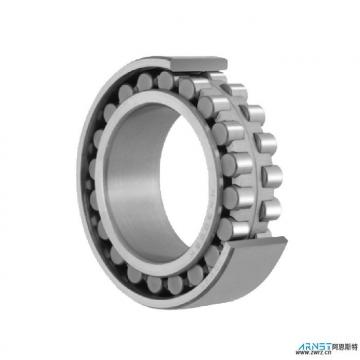 CRBH12025AUU Crossed Roller Bearing
CRBH12025AUU Crossed Roller Bearing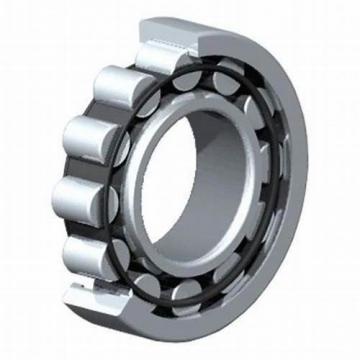 CRBH14025AUU Crossed Roller Bearing
CRBH14025AUU Crossed Roller Bearing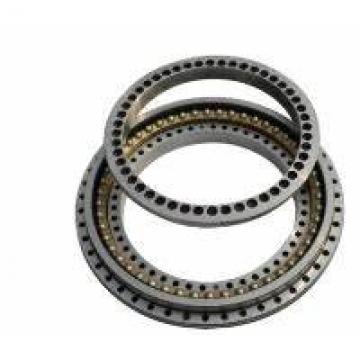 CRBH8016A Crossed roller bearing
CRBH8016A Crossed roller bearing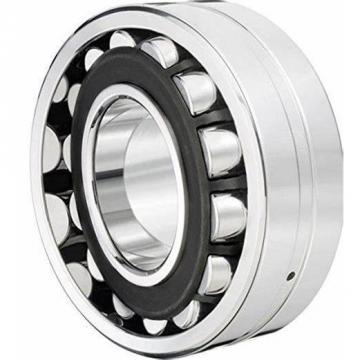 CRBH9016A Crossed roller bearing
CRBH9016A Crossed roller bearing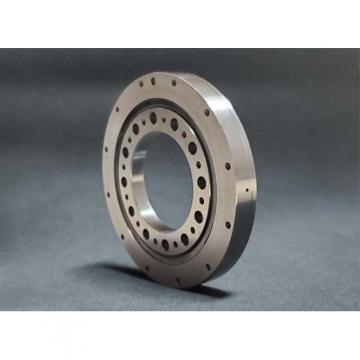 CRBH13025AUU Crossed Roller Bearing
CRBH13025AUU Crossed Roller Bearing